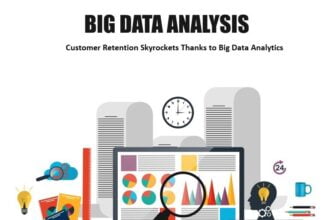Complexity in today’s workforce, new technology investments, economic pressures, talent as a competitive edge, aligning the people strategy with the business strategy and many other reasons are driving a change in HR to be information-savvy. This has turned workforce analytics to the hottest topic in the HR technology arena, but this change has also created confusion as to how best to proceed to make programs to implement workforce analytics successful.
Complexity in today’s workforce, new technology investments, economic pressures, talent as a competitive edge, aligning the people strategy with the business strategy and many other reasons are driving a change in HR to be information-savvy. This has turned workforce analytics to the hottest topic in the HR technology arena, but this change has also created confusion as to how best to proceed to make programs to implement workforce analytics successful.
In this article I will speak to the five best practices for workforce analytics that, in my experience, have made organizations successful. Those of us in the HR world know that people are always the critical element to any initiative being successful, so I won’t touch on change management, executive sponsorship and the cultural elements, which are also required for organizational success.
#1. Begin with the end in mind.
It was fabulous advice when Stephan R. Covey detailed this in his book, The Seven Habits of Highly Effective People. It remains great advice today and is especially relevant for workforce analytics projects. The challenge faced by those implementing or upgrading analytics is that analytics provide for many possible applications: delivering dashboards to executives, measuring the most important HR metrics, creating predictive models of future trends, improving turnover, and many more. Without a clear understanding of what you would like to measure, who will use the information, and what decisions will be made with the new analytics, the risk becomes failure to completely satisfy any one stakeholder’s expectations complete. Set clear goals for what the project will achieve, what it will not, and ensure these goals are clearly communicated.
#2. Deliver value at every step of the journey.
Ultimately, all analytics projects, workforce analytics included, will be journeys rather than destinations. Organizations cannot expect to take a single leap from no implementation and experience to advanced usage of predictive analytics and planning. Those that have tried to overreach often find themselves either with solutions they can’t use to full effect, or are burdened with changing project plans that lead to delay. Conversely those who have taken a stepwise approach can more clearly articulate and demonstrate tangible value the project has delivered. This creates many benefits including support for further projects, to more successful training and onboarding of users.
#3. Create transparency.
As the old adage goes, information wants to be free. Too often we question the sharing of information and seek means to lock it down, or seek to hoard it for ourselves. Certainly, organizations have sensitive data, especially employee data, and must be responsible for limiting access. The challenge is this is used to justify putting information only in executive’s hands, or HR holding too tight to the keys to the workforce data. The value of analytics is to make better, confident, fact-based decisions, but decisions are being made across the entire organization every day. The opportunity is to create a multiplier effect that sees better people decisions made throughout the organization by every people leader. The risk to limiting information sharing is the use of workforce analytics stagnates from limited usage and a lack of alignment or trust that comes from only sharing partial views of information. Challenge what can be shared, and work to create a culture that makes information based decisions.
#4. Simple is better.
One of my favorite quotes is from Mark Twain, “I didn’t have time to write a short letter, so I wrote a long one instead”. It very elegantly captures the notion that simple is harder, and in analytics this is especially true. There is always more information, or different ways to show information. The danger with not simplifying is that information overload can be just as dangerous as information under-load as users struggle to understand what is meaningful. Always challenge what information is valuable, versus what information is interesting. What decisions will you make, or what actions will be taken with the information? If you can’t clearly state how the information will be used, then challenge the need to include it in your workforce analytics.
#5. Don’t ignore the technology.
As a technologist, I know this is easy for me to say, and I also know that many of my colleagues in HR struggle with this one. The key here is not that you have to be an expert, but that you don’t remove yourself from the technology discussion and decisions. There is nothing wrong with relying on experts to provide you with advice, but ultimately you have to ensure the technology will support the goals you are trying to achieve. Ask the curious questions and understand trade-offs that the different solutions may incur.
Take these best-practices for workforce analytics to heart and you too can become a leader in this new era of information-savvy human resources.
– Dave
(*This article was originally published on humanresourcesiq.com, a division of IQPC)
About Author
Dave Weisbeck leads the overall solutions success and strategy at Visier. Dave is a seasoned software executive who has experience ranging from building development teams to growing multi-billion dollar businesses as a General Manager. Prior to joining Visier, Dave spent over 15 years in the information management and analytics industry, which included time spent helping to build Crystal Decisions and Business Objects products and product strategy. Most recently Dave was the Senior Vice President and General Manager responsible for Business Intelligence, Enterprise Information Management and Data Warehousing at SAP.







